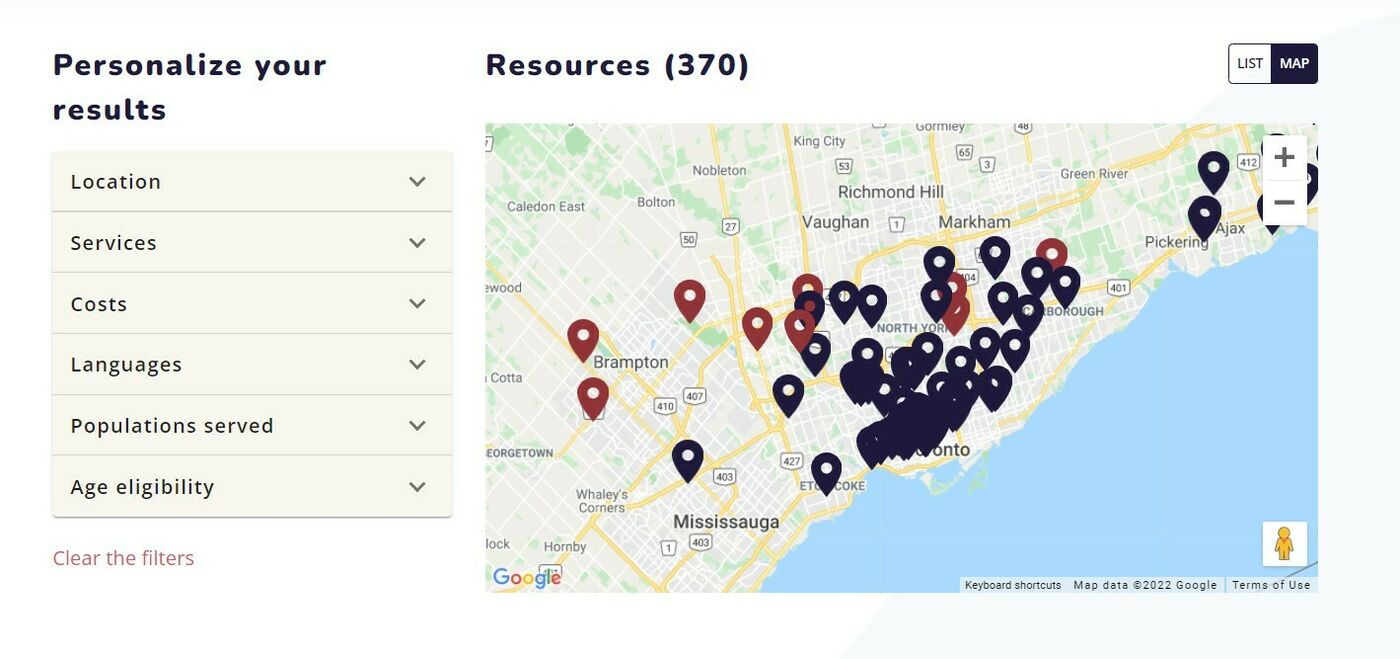
How usability testing can help improve mental health access for Black children and youth
Gathering Residents to Improve Technology (GRIT) Toronto is the inclusive user research and usability testing service of Code for Canada. In this project, GRIT worked with Pathways to Care and their developers, Nomadic Labs, to run two usability tests on the ConnectMe Project.
Finding mental health support can be difficult but with additional barriers, it can be near impossible. Children, youth and their families seeking care are constrained by financial concerns, long wait times, a lack of geographical access and much more.
“On top of that, black children and youth face those challenges while also experiencing the challenge of anti-black racism, both within the mental healthcare system and outside of it, that makes it that much harder for them to receive services,” explains Tiyondah (Alyx) Fante-Coleman, researcher with Pathways to Care.
Barriers to Mental Health
Pathways to Care is a multi-year research project launched as a partnership between Black Health Alliance, TAIBU Community Health Centre, Wellesley Institute, the Centre for Addictions and Mental Health (CAMH), and East Metro Youth Services. It aims to remove barriers and improve access to mental health and addictions services available to Black children and youth in Ontario.
“We noticed there was a real lack of information around access to mental health care for Black children and youth,” added Tiyondah. “While doing research for the project, we built this wealth of knowledge about service-providing organizations. But we didn't necessarily know what to do with that information.”
Enter Nomadic Labs — a small digital studio specializing in working with nonprofits and social enterprises on digital projects. They partnered with Pathways to Care to build ConnectMe, a searchable database of organizations that are experienced in providing mental health services to black children and youth.
Why usability testing matters
“Our goal was to reach people who we think would use the tool and gain their perspectives and to make sure that we're not missing the mark,” said Tiyondah. “There's nothing worse than putting a bunch of time and resources into something that just doesn't resonate.”
GRIT worked with Nomadic Labs and Pathways to Care to design and conduct two rounds of user testing on the ConnectMe prototype. During each test, users were given the opportunity to share their needs, their feedback and suggest improvements to the site. The team wanted a realistic understanding of how someone, who might have found the service through a web search or friend referral, might experience and interact with the tool. For both tests, GRIT arranged for the same testers to provide feedback and comment on any changes made.
“We're developing a completely new tool, so we didn't have any real world data about what people would want out of this tool or how they would use it,” added Sharon, developer at Nomadic Labs. “We wanted to test with a broad range of participants who were unfamiliar with Pathways to Care.”
Making improvements iteratively
Round One
The first round of testing consisted of open-ended interview questions to better understand the user journey and understand user preferences for interacting with a tool like this. The prototype at this stage featured a plain design and simple functionality. Participants were asked questions like:
“How would you access mental health services for yourself or someone else if you needed to?”
“Would you leave reviews for a service provider?”
“How important is it to you to find a black service provider, and why”
Round Two
The second round of testing featured an updated prototype based on feedback from the first test. Testing at this stage was largely focused on usability patterns and how participants interacted with the tool. This prototype included a more welcoming design, holistic location information, and easier-to-use search filters. Participants were asked to access the changes to the tool based on their previous feedback and determine if any information was unclear or missing.
What we learned

Design matters
A big piece of feedback during the first round of testing was that the design of the prototype was not very welcoming. This was a concern given the sensitive nature of the site and that users may be in crisis when they access it.
“When we were designing it, and we're very focused on the tool itself,” explains Sharon. “But what we found through user testing is that the design of the page impacts how reliable, safe, and appropriate users believe the tool is.”
Key factors such as the colors, imagery, and key text on the page influenced users' perception of the tool significantly. Nomadic Labs were able to make some design changes in time for the second round of testing, and the participants remarked that the redesign was more welcoming, appealing, more directed at youth, featuring hand-drawn illustrations and bright colours.

Live Filters
Additionally, testing found that participants preferred to see the results of their search update live as they added filters. The prototype included a multi-page questionnaire where participants only received their results at the end. Participants noted it was frustrating to fill out a long questionnaire and need to start over if they wanted to change any of the filters. Responding to these findings, Nomadic Labs included search results and filters on the same page — as soon as participants selected the first filter, they are already able to see the results update
Holistic Location Data
Originally, the prototype included a map and list view of the results featuring the address and distance from the participants location. Through user testing, we learned that participants were interested in more holistic location information. Nomadic Labs was able to better integrate the location data with search results and included more travel data, such as transit information, driving routes, building accessibility and travel time.
As well, most people preferred to search for services using their postal code, over location detection; largely because location detection raised privacy and confidentiality concerns, and it also had issues with accuracy during testing.
What’s next?
It was clear from two rounds of testing that this is a needed tool for black communities; may of the participants wanted to connect to a mental health service provider that really understood their lived experiences as a member of the black community some participants even wished that ConnectMe could be used for those aged out of the 'youth' category.
“It's really tough because there aren't a ton of black specific focused organizations but I think this is an excellent start to making it easy for people to access services that do exist and prioritize the mental health needs of black youth,” reflected Tiyondah.
ConnectMe is now live! If you’re in need of mental health supports for black children and youth, or you just want to check out this project, please visit: https://www.pathwaystocare.ca/connect-me
End of articles list











